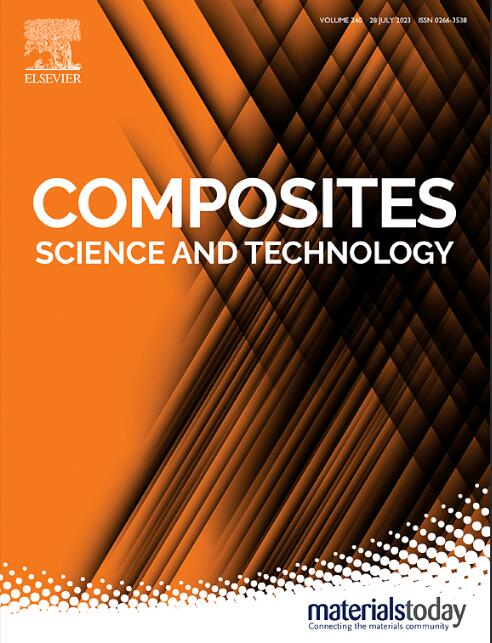Simultaneous improvement of thermal stability, mechanical properties, and combustion safety in polycaprolactone via blending with a tiny amount of aramid nanofiber
IF 8.3
1区 材料科学
Q1 MATERIALS SCIENCE, COMPOSITES
引用次数: 0
Abstract
Thermoplastic polyesters, polycaprolactone (PCL), are widely used in engineering and biomedical fields due to their flexibility, biodegradability, and processability. However, PCL's poor mechanical strength and thermal stability (e.g. high-temperature deformation, melt dripping) limit its applications. To address these limitations, this work develops novel aramid nanofiber (ANF)-reinforced PCL composites. By incorporating a tiny amount (2 wt%) of ANF into the PCL matrix via a banburying process, the mechanical properties and thermal stability of the composites are significantly improved. Compared with pure PCL, the tensile strength and toughness of the composites reach 35.6 MPa and 236 MJ/m3, respectively, significantly exceeding pure PCL of 21.3 MPa and 160 MJ/m3. Furthermore, the composite exhibits excellent shape stability and maintains its original shape even at 100 °C. More importantly, under combustion conditions, the composite completely avoids burning dripping observed in pure PCL, greatly improving its combustion safety. In addition, the composites still maintain the same excellent biocompatibility as PCL. Therefore, PCL@ANF composites show outstanding strength, toughness, thermal stability, providing huge potentials as high-performance biomedical engineering materials for fracture fixation applications.

通过与少量芳纶纳米纤维共混,提高聚己内酯的热稳定性、力学性能和燃烧安全性
热塑性聚酯,即聚己内酯(PCL),由于其柔韧性、生物降解性和可加工性,在工程和生物医学领域得到了广泛的应用。然而,PCL较差的机械强度和热稳定性(如高温变形、熔融滴)限制了其应用。为了解决这些限制,本研究开发了新型芳纶纳米纤维(ANF)增强PCL复合材料。在PCL基体中加入少量(2 wt%)的ANF,复合材料的力学性能和热稳定性得到显著改善。与纯PCL相比,复合材料的抗拉强度和韧性分别达到35.6 MPa和236 MJ/m3,明显超过纯PCL的21.3 MPa和160 MJ/m3。此外,复合材料表现出优异的形状稳定性,即使在100°C下也能保持其原始形状。更重要的是,在燃烧条件下,该复合材料完全避免了纯PCL的燃烧滴漏现象,大大提高了其燃烧安全性。此外,复合材料仍然保持了与PCL相同的优良生物相容性。因此,PCL@ANF复合材料具有出色的强度、韧性、热稳定性,作为高性能生物医学工程材料在骨折固定方面的应用具有巨大的潜力。
本文章由计算机程序翻译,如有差异,请以英文原文为准。
求助全文
约1分钟内获得全文
求助全文
来源期刊

Composites Science and Technology
工程技术-材料科学:复合
CiteScore
16.20
自引率
9.90%
发文量
611
审稿时长
33 days
期刊介绍:
Composites Science and Technology publishes refereed original articles on the fundamental and applied science of engineering composites. The focus of this journal is on polymeric matrix composites with reinforcements/fillers ranging from nano- to macro-scale. CSTE encourages manuscripts reporting unique, innovative contributions to the physics, chemistry, materials science and applied mechanics aspects of advanced composites.
Besides traditional fiber reinforced composites, novel composites with significant potential for engineering applications are encouraged.
 求助内容:
求助内容: 应助结果提醒方式:
应助结果提醒方式:


